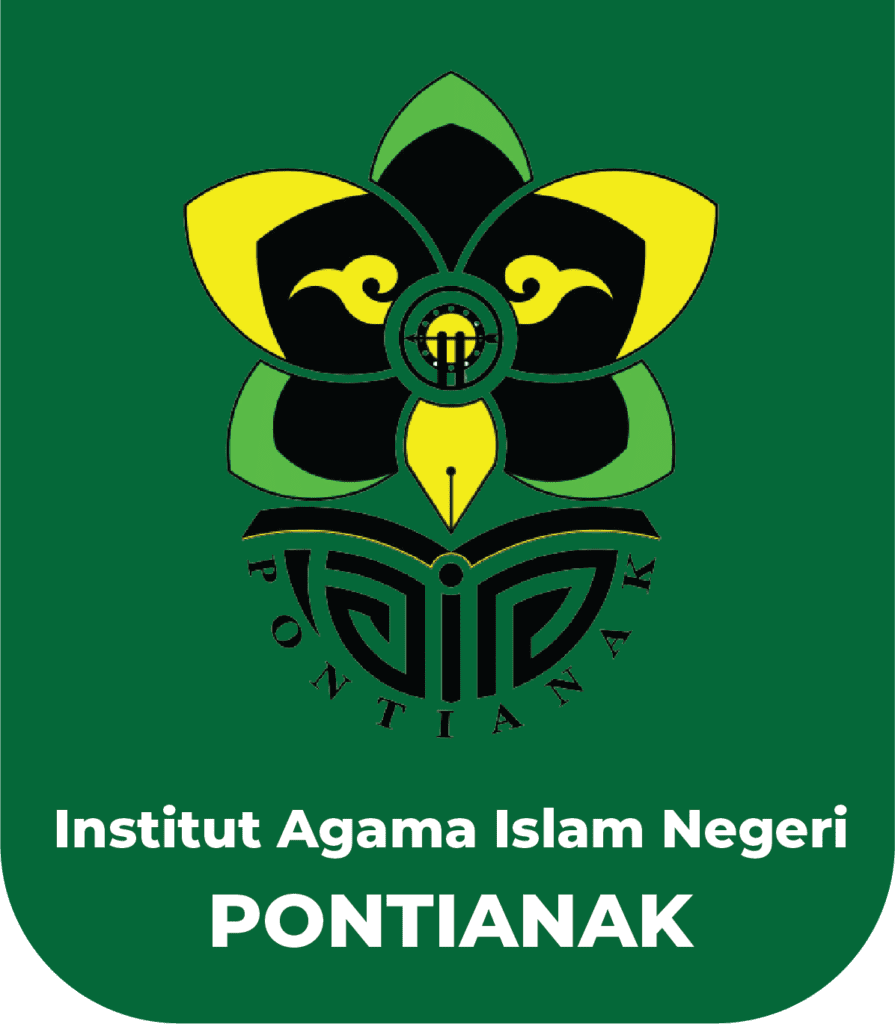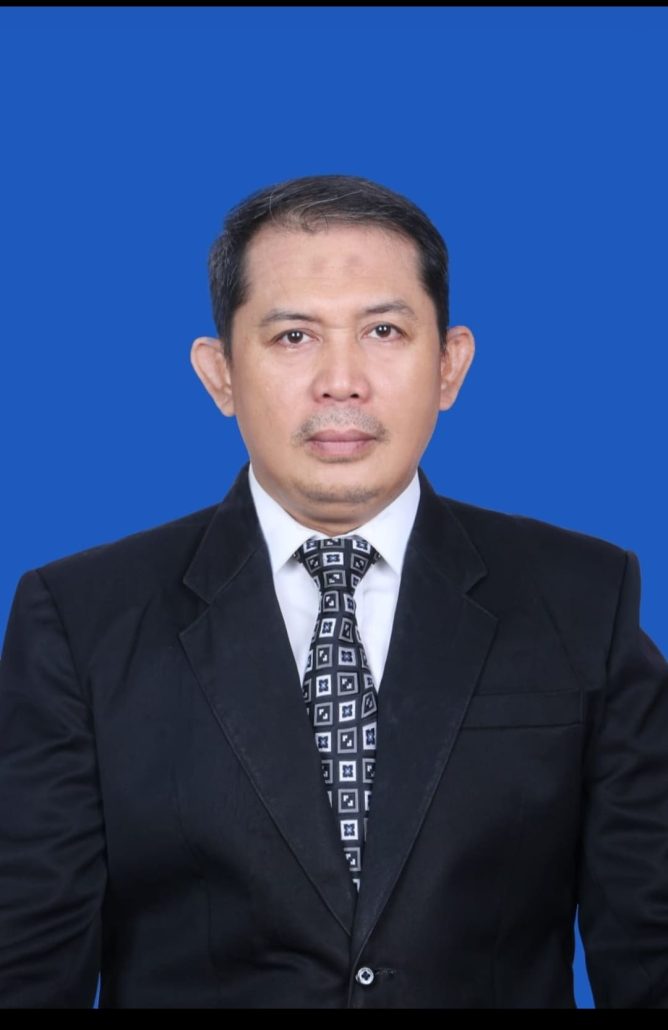By: Eka Hendry Ar*.
A. Introduction
The dates of September 9–11, 2025, marked a historic moment for IAIN Pontianak and the KAIB partner institutions, as the 16th Borneo International Islamic Conference (KAIB XVI) was held in Pontianak, West Kalimantan, Indonesia. This year’s host was IAIN Pontianak, which had the honor of hosting the conference for the third time. The 16th KAIB adopted the theme “World Peace, Environmental Crisis, and the Second Wave of Inter-Civilization Dialogue,” which was further developed into six major sub-themes: Socio-Cultural Issues and Manuscripts (6 sub-themes), Education (2 sub-themes), Politics (1 sub-theme), Maritime and Environment (2 sub-themes), Religious Issues (3 sub-themes), and Economics (2 sub-themes).
The background for the theme of peace and environmental crisis is related to recent global conditions, which have been marked by various political, economic, and environmental crises. The 16th KAIB took place amid the dynamics of an unstable international political constellation, undergoing rapid changes at both global and local levels. At the global level, the world is haunted by various violent conflicts, such as the prolonged humanitarian conflict between Palestine and Israel, the ongoing Russia-Ukraine conflict, and the China-Taiwan tensions, which show no signs of resolution. According to records from Tempoinfographic (Thursday, July 28, 2025), at least 45 countries are plagued by armed conflicts: 22 in Africa, 8 in the Middle East, 2 in Eastern Europe, 5 in the Americas, and 5 in Southeast Asia (Philippines, Myanmar, Indonesia, Thailand, and Cambodia).
In addition to various war and global political issues, the world is also facing numerous natural disasters as a result of the environmental crisis (global warming) and the impact of exploitative liberal economic policies on natural resources. Consequently, natural disasters have occurred in various countries, resulting in loss of life, property, and the future of national generations. War and environmental destruction have become an incredible “killing machine” in recent times, creating an irony against humanity’s spectacular advancements in science and technology.
The issues of peace and natural disasters are not only global concerns but also challenges for nations in Southeast Asia. Several Southeast Asian countries also have the potential for conflicts with one another. August 2025 served as evidence, with the outbreak of open war between Thailand and Cambodia, two neighboring countries long haunted by border crises. Natural disasters have also struck Southeast Asian nations, including floods, earthquakes, and forest fires. These two levels of problems pose serious challenges, requiring attention from all nations. We need a global vision as global citizens because these issues cannot be solved in a parochial and exclusive manner. Instead, they must be addressed collectively, as a collective will.
In this context, it is necessary to mainstream the second wave of civilizational dialogue—an effort to build coexistence and encounters among nations, cultures, and civilizations that are not polarized solely between East and West, Islam and non-Islam, or Socialism and Capitalism. Instead, it must weave collaborative efforts that bring together all nodes of world civilization more broadly, inclusively, and comprehensively, in terms of region, culture, religion, and ethnicity. The second wave of civilizational dialogue must be built among Western Europe, Eastern Europe, Asia, Africa, North America, Latin America, the Middle East, Southeast Asia, and Australia in an egalitarian, inclusive, and coexistent manner. Some may consider this utopian, but we believe hope always exists as long as we keep the flame of that imagination alive. The 16th KAIB is a moment and a monument that ignites and keeps the flame of that hope burning. Through the bridges of knowledge and culture, intellectuals in several border countries—Indonesia, Malaysia, and Brunei Darussalam—keep the light of that hope shining brightly.
B. Dynamics of the Implementation of Borneo International Islamic Conference (KAIB) XVII
The 16th Borneo International Islamic Conference (KAIB) this year was attended by participants from various domestic and international higher education institutions, both offline and online. These included UiTM Malaysia Shah Alam, UiTM Sarawak Branch, UiTM Sabah Branch, KUPU SB Brunei Darussalam, UNISSA Brunei Darussalam, UPM Bintulu Branch, Central Philippine University, Hamburg University Germany, IAIN Pontianak, UIN Antasari Banjarmasin, UIN Palangkaraya, Mulawarman University East Kalimantan, UIN Sultan Aji Muhammad Idris Samarinda, and Tanjungpura University. Furthermore, participants also attended from various general and religious universities in Indonesia. The conference was attended by no less than 200 participants, both as presenters and attendees. Originally, more participants were expected to attend offline, but as the event approached, some cancelled their in-person attendance. This was related to the dynamics within Indonesia concerning waves of demonstrations in various Indonesian cities.
The 16th KAIB in 2025 was enlivened by various academic, fellowship, and cultural activities. The following is the list of activities for KAIB XVI:
The Opening Ceremony was held at the West Kalimantan Governor’s Pendopo, opened by the Director of Islamic Higher Education (Diktis), Prof. Dr. Phil. Sahiron, M.A. Initially, the event was to be opened by the Vice Minister of Religious Affairs of the Republic of Indonesia, but for various reasons, it was delegated to the Director of Diktis. After the opening ceremony, it continued with the International Keynote Speech Seminar, delivered by 3 main speakers: The Honorable Mufti of the State of Sabah, Datuk Ustaz Haji Bunsu @ Aziz Bin Haji Jaafar; the General Manager of the Sarawak Baitul Mal Fund, Datu Haji Abang Mohammad Shibli Bin Haji Abang Mohd. Nailie; and the Director of DIKTIS of the Indonesian Ministry of Religious Affairs. The Mufti of Sabah raised issues regarding the Political Constellation in the Middle East, the Palestine vs. Israel conflict, and America’s Double Standard in addressing the conflict. Datu Haji Abang Mohammad Shibli spoke about the existence of the Baitul Mal Fund institution in Sarawak, covering the Organizational Profile, Work Programs, and the institution’s achievements, as well as its contribution to the development of the community. Meanwhile, the Director of DIKTIS conveyed the urgency of building and realizing a theology with a humanitarian and tolerant vision, through the “Curriculum of Love” concept launched by the Minister of Religious Affairs of the Republic of Indonesia. The International Keynote Speech Seminar, which lasted approximately 1.5 hours, was moderated by Prof. Dr. H. Hermansyah, M.Ag. (Dean of the Faculty of Education and Teacher Training, IAIN Pontianak).
The event continued with a dinner and fellowship gathering on September 9, 2025, between the leadership of KAIB Partner Universities and the Vice Minister of Religious Affairs of Indonesia and the Governor of West Kalimantan, held at Pondok Kakab Restaurant, Pontianak. On this occasion, the Vice Minister of Religious Affairs, Dr. KH. Romo Raden Muhammad Syafi’i, SH., M.Hum., expressed his appreciation for the implementation of the 16th KAIB. He conveyed several messages from the President of the Republic of Indonesia, promoting the tagline “one enemy is too many, a thousand friends are too few,” emphasizing that the primary capital is unity, solidarity, cooperation, or collaboration that we must prioritize. This includes building brotherhood with neighboring countries, especially in the Borneo region.
The International Premier Address Seminar on September 10, 2025, was held at the Mercure Hotel Pontianak. The Premier Address Seminar featured 11 speakers consisting of the Rectors of the KAIB XVI Partner Universities. The Vice-Chancellor of UiTM Malaysia, YBhg. Professor Datuk Ts. Dr. Shahrin bin Shahib @ Sahabudin, was the final presenter, sharing his thoughts on the urgency of peace, environmental crisis issues, and the need for inter-civilization dialogue. The Rector of UIN Palangkaraya, Prof. Dr. H. Ahmad Dakhoir, SHI., M.HI, presented on “Borneo for the Future of the Ummah: Mapping and Strategic Strengths.” The Rector of Mulawarman University, Prof. Dr. Ir. H. Abdunnur, M.Si., IPU, ASEAN Eng., presented on “Strategic Development of Three Pillars of Higher Education Mission based on the Mulawarman University’s Scientific Orientation.” The Rector of UiTM Sabah Branch, Associate Professor Dr. Rozita @ Uji Mohammed, raised an economic issue: “Creating A Sustainable Blue Economy Framework Through Islamic Partnership.” Meanwhile, the Rector of UiTM Sarawak Branch, Prof. Dr. Firdaus Abdullah, presented on “Bridging Islamic Finance and Modern Capitalism for Sustainable Development.” The Rector of UIN Antasari Banjarmasin, Prof. Dr. H. Mujiburrahman, MA., presented a paper titled “Are We Blind and Ignorant? Science, Religion, and the Environmental Crisis.” Dr. Haji Mohammad Shahrol Azmi bin Haji Abdul Muluk, Deputy Rais of KUPU SB, presented on “Building World Peace Through Strengthening Youth Identity According to the Perspective of Brunei Darussalam.” Subsequently, Prof. Dr. Shahrul Razid Sarbini, Director of UPM Bintulu, presented on “Confronting the Crisis and Challenges of Global Food Security.” Prof. Dr. Zamroni, M.Ag. (Vice Rector II) of UIN Sultan Aji Muhammad Idris Samarinda, spoke about the “Curriculum of Love: Planting Moderation and Tolerance in the Heart of Borneo Island.” UNISSA, through the Assistant Rector for Student and Alumni Affairs, Pengiran Dr. Hajah Norkhairiah Binti Pengiran Haji Hashim, also contributed to this Premier Address. The presentations concluded with a presentation by the Rector of IAIN Pontianak, Prof. Dr. H. Syarif, MA., on “Religious Moderation and the Future of Southeast Asia.” As a mark of respect, the Rector of IAIN Pontianak honored Prof. Dato Dr. Jamil Hamali as the Founder of KAIB to deliver remarks and messages for KAIB’s development in the future. The International Premier Address Seminar was enthusiastically attended by KAIB participants, IAIN Pontianak lecturers, and invited guests, from 08:00 to 12:30 Western Indonesian Time. The premier address seminar was moderated by Prof. Dr. H. Zainuddin, MA. (Director of Postgraduate Studies at IAIN Pontianak).
The event then continued with Parallel Seminars held on the 3rd floor of the Postgraduate Building of IAIN Pontianak. The parallel sessions were divided into 6 rooms, each with a different theme. Presentations used two methods: offline and online. The presenters took turns sharing the thoughts and ideas they had written in their respective articles. After presenting their material, the moderator guided the Q&A session. The parallel seminars ran for 1.5 days from September 10-11, 2025. Concurrently with the parallel seminars, on the afternoon of September 10, 2025 (15:00 Western Indonesian Time), a Meeting Forum of the KAIB Partner Rectors was held in the Rector’s Meeting Room of IAIN Pontianak. This forum discussed several recommendations from KAIB XVI and the appointment of the host for KAIB XVII at UIN Palangkaraya. Among the recommendations from KAIB XVI was the need to realize several previous recommendations that had not yet been implemented, such as cooperation in the Tri Dharma of Higher Education, including Collaboration in Education and Teaching, Collaborative Research, and Community Service (Public Services). The forum also recommended that future conferences should not only involve lecturers but also need to involve students. Furthermore, it is necessary to diversify activities, not just academic ones, but also to add cultural activities and competitions for students. The forum also recommended creating a KAIB jingle to be sung at every KAIB implementation. The Rectors agreed and committed to realizing the recommendations made, to ensure follow-up after the conference.
On the evening of September 10, 2025, participants attended a Fellowship Gathering at the residence of the Mayor of Pontianak. The event featured a joint dinner, entertainment with Gambus music, Pantun, and Pontianak Malay Drums (Tundang). On this occasion, the Mayor of Pontianak, Ir. Edi Rusdi Kamtono, MM, MT, conveyed his congratulations and support for the implementation of KAIB XVI and provided information about Pontianak City.
To introduce the culture and social life of the Kapuas riverside community, the activities also included a Kapuas River Cruise, riding a ‘bandung’ boat along the Kapuas River. Participants were treated to views of the riverside of Kapuas, observing community life and settlements, and the Kadariah Palace Mosque of the Pontianak Sultanate. Besides relaxation, the Kapuas River Cruise also aimed to understand the way of life of people living along the Kapuas River. The Kapuas is the longest river in Indonesia, approximately 1,143 km long.
In addition to academic activities, KAIB XVI was also enlivened by a Cultural Exhibition showcasing the intellectual works of lecturers and researchers from both IAIN Pontianak and the West Kalimantan Historical Study Center.
On the evening of September 11, 2025, KAIB XVI was officially closed by Prof. Dr. M. Arskal Salim GP., M.Ag., Secretary of the Directorate General of Islamic Education, Ministry of Religious Affairs of the Republic of Indonesia. The closing ceremony was held at the Hall of the Kubu Raya Regent’s Office. On this occasion, the Vice Regent of Kubu Raya, H. Syukiryanto, S.Ag., who is also the Chair of the IAIN Pontianak Alumni Association, expressed his appreciation for the implementation of KAIB XVI and congratulated all KAIB participants. He hopes that IAIN Pontianak will continue to develop and soon become a State Islamic University (UIN). The Secretary of the Directorate General of Islamic Education of the Indonesian Ministry of Religious Affairs expressed his appreciation for the organization of KAIB XVI. According to him, this is one of the strategic advantages of UIN/IAIN campuses that are geographically adjacent to neighboring countries. It would be a pity not to maximize this opportunity. This conference is one way to optimize these strategic opportunities to improve the quality of each university, especially for State Islamic Higher Education Institutions.
C. Contributions of Thoughts and Ideas from Fellow Intellectuals
Although the political dynamics created less favorable conditions, this did not diminish the enthusiasm and spirit of academics to participate in the conference. A total of approximately 138 articles were accepted for presentation in the parallel seminar. These articles, later compiled into the Abstract Proceeding Series, address a wide range of issues, themes, and topics—from the history of kingdoms in Borneo, socio-religious life, economic practices, education, to the cultural heritage that has developed within society.
To mention just a few examples: Nur Adilah Amiruddin, Noor Ain Mohd Noor, Nazirah Hamdan, Mohamad Bazli Md Radzi, and Mohd Asyraf Yusof presented “The 2025 Iran-Israel Counterattack: Its Impact on Regional and Global Security.” Samsul Hidayat discussed “Public Advocacy and Interfaith Dialogue in the Dispute over Catholic Church Rejection.” Rev. Jerson B. Narciso and Nestor D. Bunda from the Philippines examined “Islam and Christianity: Cultivating Shalom (Katawhay) and Salaam in the Philippine South.” Militansia explored “Photovoice for Peace: Fostering Religious Tolerance Through EFL Writing in Islamic University.” Hesty Nurrahmi focused on “The Role of Islamic Counseling in the Curriculum of Love.”
In the field of religious history, Muhammad Khatib Johari presented “The Influence of Imam Al-Sanusi in the Writing of Aqidah in Sarawak: An Analysis of Risalah Hidayah lil Walad al-Walad.” Faizal Amin discussed “Reception of Qur’anic Verses as Wirid to Overcome Life Problems in the Manuscript of Shaykh Abdus Somad.” Mohammad Rikaz Prabowo examined “The Growth of Islamic Schools in Sintang in the Colonial Era, 1901–1942.” Margaret Kit Yok Chan, Nuraini Putit, Houng Ting, and Kamal Abdullah wrote about “Islamisation of the Middle Kingdom: Indera Ponik from the Reign of the First Raja Tengah to the Legendary Datuk Haji Ibrahim of Pulau Lakei.” Abdul Razak Abdul Kadir, Saimi Bujang, and Norazinah Yusuf contributed “A Textual Critique of the Manuscript ‘Silsilah Acal Segala Radja-Radja Sambas’: A Study of Sultan Tengah’s Journey to Sambas.”
Norahimah Haji Duraman, Khatijah Othman, and Rasina Haji Ahim discussed “Teaching Innovations in the Curriculum of Muslimah Guidance Classes in Brunei Darussalam.” Siti Nur Syamimi binti Adam Malik, Dania Insyiraah binti Iswandy, and Nur Adilah Amiruddin examined “Assessing the Awareness of Halal Practices Among Muslim Students at UITM Samarahan Campus, Kuching, Sarawak.” Moch Riza Fahmi analyzed “The Future of Religion in the Wake of Global Political Upheaval: A Comparative Study of Indonesia, Malaysia, and Brunei Darussalam.” Eka Hendry Ar., Zaimmuariffudin Shukri Nordi, Segu, Suhardiman, and Bibi Suprianto explored a cultural issue in “Bangka Tradition: Temporary Graves in Nanga Bunut, Kapuas Hulu Regency, West Kalimantan.” And there were many more insightful articles worth reading and studying.
These articles were written with seriousness, supported by rich data and perspectives, making them a fascinating academic mosaic. They should not be viewed as an academic competition but rather as a collaborative effort contributing to the progress and glory of Bornean Islamic civilization—an inclusive civilization, full of diverse mosaics, sending messages of peace and contributing to human development. Some of these articles will later be submitted to indexed journals, while others will be published in the proceedings of KAIB XVI.
D. Reflective Notes on KAIB XVI
After participating in every stage of the KAIB XVI, the author observed several strategic points which also serve as reflections from the conference, as follows:
First, the implementation of the Borneo International Islamic Conference (KAIB) serves as a platform for fostering silaturrahmi (bonds of kinship) and academic collaboration among universities on the island of Borneo, which is home to three closely related nations: Indonesia, Malaysia, and Brunei Darussalam. It is called a platform of silaturrahmi because fundamentally these three neighboring countries share many similarities in language, customs, religion, and fraternal ties. This greatly facilitates communication, understanding, and cooperation among them. This is an important foundational asset, preceding purely academic interests. With these bonds of brotherhood, it becomes much easier to build more strategic relationships, including academic collaboration.
Second, KAIB is not merely a venue to showcase scientific papers (whether research-based or literature reviews), but rather an effort to build synergy and exchange knowledge and experiences among academics from various disciplines, nations, and educational backgrounds. Each participant gains lessons and academic experiences that can be developed in their respective institutions. I call this a meeting of minds and souls, not a clash of intelligence or expertise. What we need today is mutual enrichment and support in building the civilization of knowledge. From this momentum, it is hoped that communication and academic collaboration will be established among lecturers and researchers to conduct joint research and teaching. It would be a great loss if academics from KAIB partner campuses do not make the most of this opportunity.
Third, one of the strategies for improving the quality of higher education institutions is to strengthen international networking and collaboration. The goal is not merely to fulfill accreditation requirements, but a necessity. Our future need is to develop a global mindset (internationalization), so that universities in Indonesia can foster a “need for achievement” effect, similar to what universities in other countries have achieved. Quality may indeed be relative, but exchanging experiences must continue. There is no harm, and it is not an act of inferiority, if institutions such as IAIN Pontianak learn from larger universities, both domestic and abroad, so that IAIN Pontianak can emulate those successes.
Fourth, regarding the articles presented at KAIB, overall they already demonstrate a diversity of issues, regions, and academic perspectives. Collaboration in contributing ideas has indeed been realized through KAIB. However, what remains lacking is the number of articles written jointly by lecturers and researchers across different campuses, both domestic and international. This indicates that collaboration among KAIB partner universities is still minimal. In fact, collaborative research and joint writing of scientific articles reflect the occurrence of an academic and cultural dialectic. This dialectical process is a learning moment that enriches cultural understanding, international skills, and academic experiences. Therefore, KAIB XVII should produce more collaborative articles written jointly by partner universities both within and outside the country.
Fifth, given the strategic value of KAIB, it would be unfortunate if such meetings occur only once a year. This creates the impression of discontinuity in ideas and reflections. In the author’s view, follow-up activities need to be organized on perhaps a smaller scale, but still carrying forward the major ideas of KAIB itself. The communication and cooperation networks already established must be continuously nurtured, whether through reciprocal visits or through joint programs (within the framework of the Tridharma of Higher Education). The easiest level of collaboration is in teaching, for instance, through virtual classrooms or online collaborative learning between lecturers from KAIB partner universities. Or more simply, by exchanging academic works such as books and journals, as well as scientific activities between campuses. At the leadership level, more frequent visits should be made, opening up more concrete collaboration opportunities such as collaborative research, faculty and student exchanges, guest lectures, joint public service activities, co-authored books, and even cultural and sports activities. The principle is that there must be follow-up activities after KAIB, so that networks become increasingly intensive from one conference to the next.
________
*Lecturer at IAIN Pontianak, Person in Charge (PIC) of KAIB XVI





